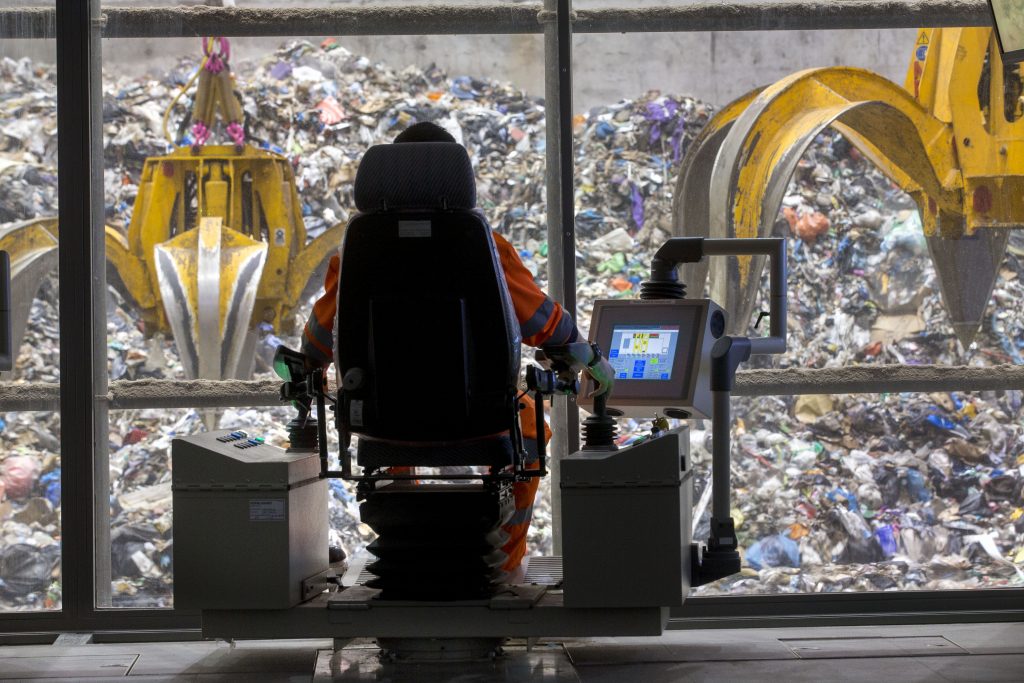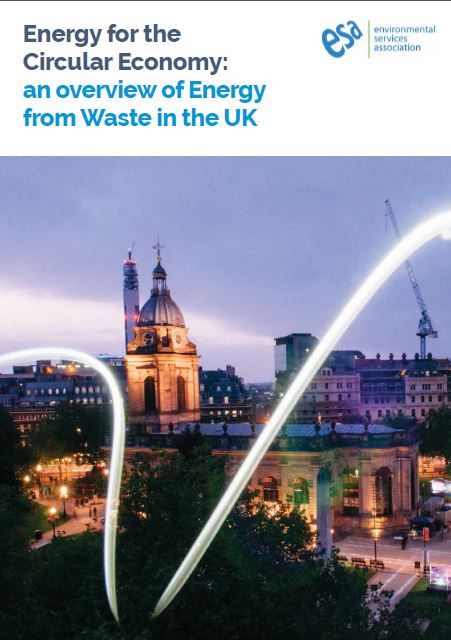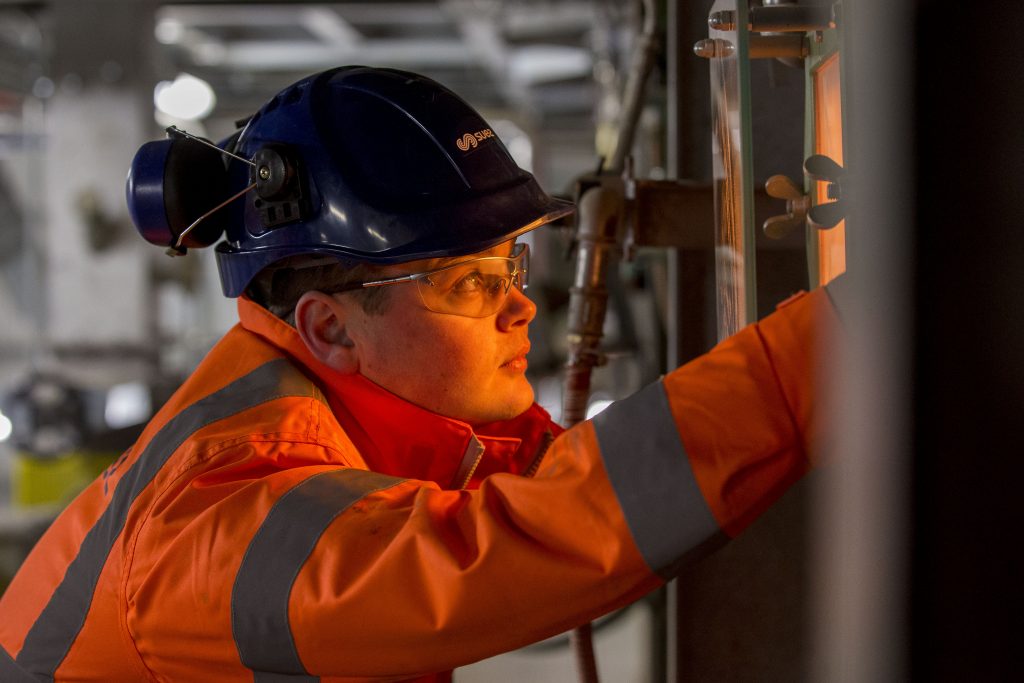Energy from Waste technology is at the heart of a shift to a circular economy
13th June 2018
Posted by Dr Adam Read.
I was fortunate enough to attend the launch of the Environmental Services Association (ESA) report on the role of energy recovery in a circular economy last week (6 June) at the House of Commons, which was both well attended and well received.
It is a short document (thankfully I hear you cry) that highlights the growth of energy from waste (EfW) in the last decade, its environmental credentials and most importantly the role it does (and could play) in helping the UK meet the EU’s Circular Economy Package.
After all, once the 65% recycling target has been met there is still plenty of discarded materials that need diversion from landfill.
EfW’s contribution in the UK
Currently there are 40 municipal based EfW plants operating in the UK diverting some 10 million tonnes per annum of residual waste. Eight of these export heat and energy and a further nine plants are in construction.
These facilities generate 5TWh of low-carbon electricity, enough to power 1.6m homes, as well as 730GWh of heat for district heating networks and industrial users.
For context, SUEZ has seven operational EfWs in the UK with an annual capacity of approximately 2.2m tonnes per annum. Our gasification plant in Surrey, which is due to come online later this year, will process an additional 45,000 tonnes per annum, while we have one or two other deals in the pipeline. As such you would expect me to be a supporter of EfW solutions.
Well I am, but not because I work for SUEZ, but because for the last 20 years I have been working with cities and local authorities on developing longer term, strategic and environmentally sound waste management (and resource recovery) services and infrastructure.
Looking forward
 By 2030 there could be anywhere from 3 to 12 million tonnes per year of commercial and municipal residual wastes needing to be treat depending on just how high levels of recycling go up.
By 2030 there could be anywhere from 3 to 12 million tonnes per year of commercial and municipal residual wastes needing to be treat depending on just how high levels of recycling go up.
Hitting 65% isn’t going to be easy without significant reform of the sector, and that could be even higher if in a post-Brexit world the 3.5 million tonnes per annum of SRF and RDF currently being exported is subject to tariffs or increased operational costs from the monitoring requirements introduced at UK ports.
I firmly believe that EfW is an important bridge (transition stage) from a landfill-based system, to one where materials are kept active in our economy through Extended Producer Responsibility, Deposit Return Systems and various forms of collection, harvesting and recycling.
But, it takes time to build a circular economy, to change the habits of consumers and industry alike and to put in place the markets that will pull the target materials through. And all this time we have had to recycle items (black plastics, composites, low grade papers and nappies). We need an alternative solution, and energy recovery provides the benefits of feeding the grid and in some cases heating industrial sites or district networks, so why shouldn’t we embrace it, at least for the next 20 years or so?
And whilst we transition away from these hard to recycle materials we need a way of treating them that protects human health and the environment, with plenty of research showing that EfW is the right selection, which is why it is remains so prevalent around mainland Europe.
Why are we still debating the role of EfW?
Many of us at the launch were asking why it was necessary to develop the ESA guide which not only outlines the role of EfW today, but also its criticality for a more resource-focused UK for the next 25 years?
With the progress that these technologies have made in terms of environmental controls and in assisting the UK to move away from landfill, you might think that the future looks rosy.
But there has been a number of planning appeals in the UK in recent months associated with EfW and other large scale waste processing sites, with slow progress being made on some other sites
Whether it be down to funding concerns during build or teething issues during commissioning, given the number of phone calls and emails I get from campaign groups and other interested parties wanting to know more about these technologies (and in some cases to ‘put the boot’), the rationale for the document is evident.
The ESA, and I have to declare my interest here as one of the peer reviewers for the guide, was keen to showcase the positives of EfW and make this information in an accessible format for campaigners, politicians and the general public to help dispel some of the myths. This way we can call for government to help us move beyond this impasse in beliefs and debate.
Sometimes it is easy to forget that for each tonne of waste diverted from landfill to EfW it saves 200kg of carbon. And even in the most optimistic of recycling scenarios some 6m tonnes per annum is going to need to find a suitable end disposal point by 2025, so why not recover the heat and energy and fuel one million homes each year?
What is the ESA asking for?
 According to Jacob Hayler, ESA’s Executive Director, “Government must support us in unlocking domestic infrastructure investment in EfW by creating a coherent, stable policy environment for recycling and resource management, focusing on the material that simply cannot be recycled, that recognises our sector’s positive role in delivering even greater benefits to the economy, whilst supporting and delivering the UK’s recycling ambitions.”
According to Jacob Hayler, ESA’s Executive Director, “Government must support us in unlocking domestic infrastructure investment in EfW by creating a coherent, stable policy environment for recycling and resource management, focusing on the material that simply cannot be recycled, that recognises our sector’s positive role in delivering even greater benefits to the economy, whilst supporting and delivering the UK’s recycling ambitions.”
The ESA also want a coherent policy framework that not only addresses high recycling, reuse and prevention, but openly covers the residual waste capacity gap that has been robustly demonstrated in the last 12 months.
To get the investment needed from companies like SUEZ and the markets, we need a stable regulatory environment where subsidies, taxes and targets do not change with a whim. We hope this will be addressed in the Resources & Waste Strategy, which is due out at the end of 2018, and is something I have been working hard to lobby on through ongoing dialogue with Defra and the launch of the SUEZ manifesto (more of that in next month’s blog).
Secondly, the ESA is asking that future combined heat and power (CHP) opportunities are facilitated so that the thermal efficiency of our portfolio of current and planned EfW sites increase beyond 30% to nearer 70% and the benefits of localised heat use can be delivered.
We believe that heat mapping of the UK to identify potential heat off-takers must be done and that all local plans should have enabling sustainability criteria (low carbon heat targets for example) to stimulate the uptake of CHP.
The future is bright
 In recent months there have been two large two-day EfW conferences in London, each with over 200 delegates, and each with a mix of UK and international speakers showcasing the best of all energy recovery technology options.
In recent months there have been two large two-day EfW conferences in London, each with over 200 delegates, and each with a mix of UK and international speakers showcasing the best of all energy recovery technology options.
This suggests that interest in the UK market remains strong, and with the ESA’s predictions, and our own Mind the Gap analysis, there really is a lot of scope for managing residual municipal and commercial wastes better to generate electricity, heat and power in the coming 20 year period.
Investors are certainly interested, what with the recent acquisition of Cory’s Belvedere 750,000 tonnes per annum EfW site (and their plans for a larger second facility next door) by Dalmore Capital, Fiera Infrastructure, Semperian PPP Investment Partners and Swiss Life Asset Managers for an alleged £1.5 billion.
So, what we need now is a coherent strategy framework that identifies the central role that EfW will play as we transition away from the EU, move towards more circularity, and power our new clean and low carbon industries.
Accepting a 25 year horizon seems to make sense, allowing us time to get new policies and targets embedded, reflecting investment requirements and return periods and ensuring we don’t undermine the sustainability of our current system by thinking we can go circular at the blink of an eye.
It won’t be long until we know, but until then we will continue the local debates, the political engagement and the education needed to ensure EfW is not vilified, but is recognised as a central pillar of a sustainable and circular UK.
As always my opinions are my own, and I welcome some debate at this critical time for the evolution of the waste & resource sector in the UK.
A copy of the ESA report can be downloaded here.
This blog was originally published on http://www.recyclingwasteworld.co.uk on 11 June 2018.
Tweet- circular economy
- energy-from-waste
- energy-from-waste facility
- ESA
- waste and resource policy
- waste management
- waste management industry
